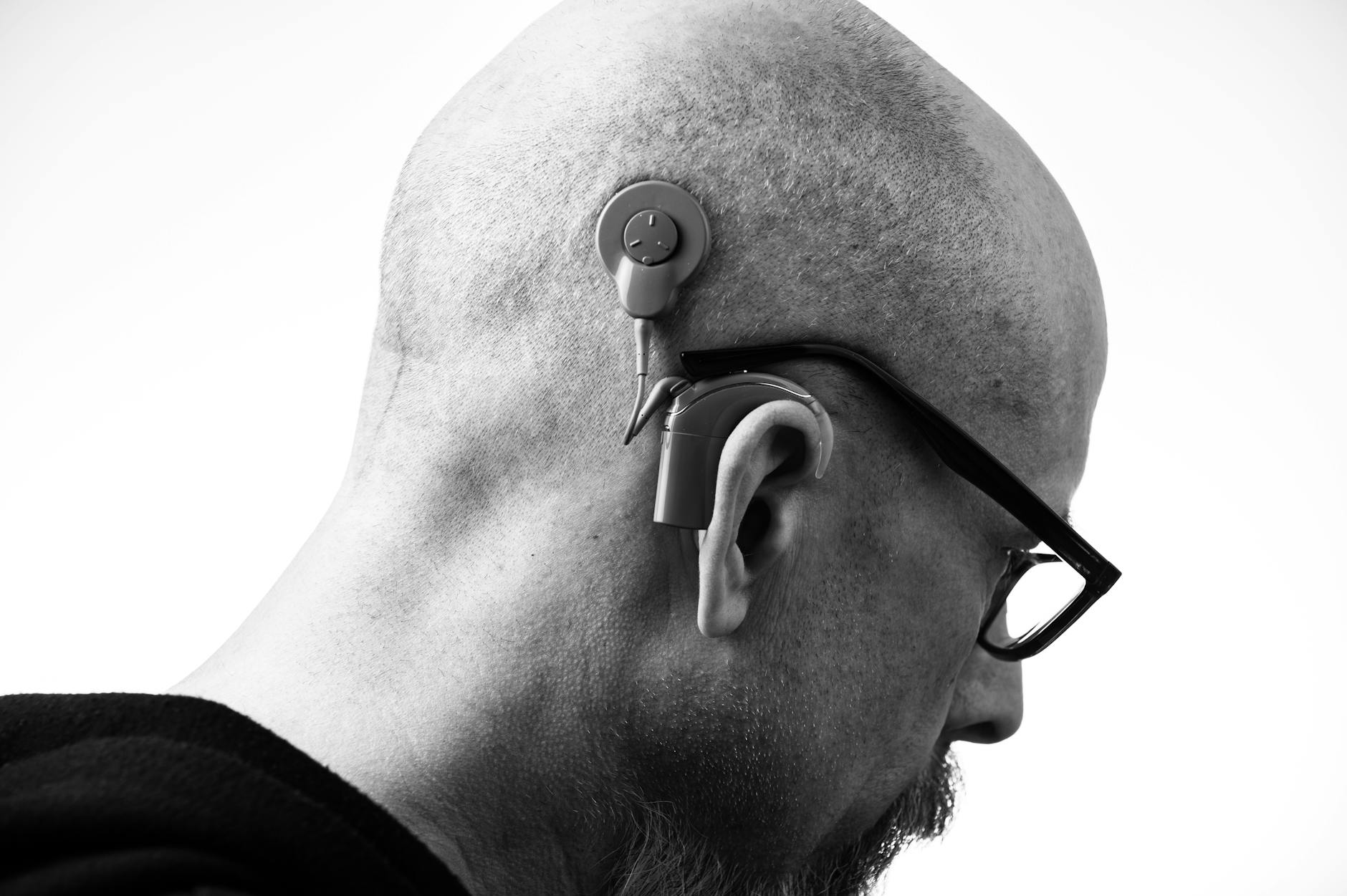Lede: You don’t need a recording studio to hear better at home—just a few smart tweaks. Soft rugs, kinder lighting, quieter appliances, and a little layout magic can drop echo, tame background noise, and make words click again. Let’s give your rooms better listening skills.
Why home acoustics matter (even if you already wear hearing aids)
Your ears and brain are a team. When rooms are echoey or noisy, your brain burns extra energy to fill in gaps. That can mean listening fatigue, more “What?”s, and for some people, louder-feeling tinnitus at day’s end.
- Background noise masks soft speech sounds—the consonants that carry meaning.
- Reverberation (echo) smears speech over time, making words blur together.
- Distance and lighting change how easily you catch visual cues (lips, facial expression).
Evidence backs this up. Education and clinical acoustics standards aim for low background noise and short reverberation times so speech stays crisp. Borrowing those principles at home makes everyday conversations easier for everyone—especially if you live with hearing loss or tinnitus.
Start here: a 5‑minute home listening check
- Clap test: Stand in the living room and kitchen. Clap once. If you hear a long tail of sound, there’s reverberation to tame.
- Phone meter: Use a sound level app (the free NIOSH Sound Level Meter on iOS is research‑grade) to sample everyday levels. Aim for conversation spaces around the low‑40s dBA when no one is talking and sleep spaces in the 30s dBA at night, if possible.
- Speech trial: Sit 6–8 feet apart with the TV off. Can you follow normal conversation without leaning in? Now add low background music. Does it get harder? That’s your baseline.
Your playbook: ABCC—Absorb, Block, Cover, Clarify
Think of this as a simple sequence you can reuse in any room.
A = Absorb (kill the echo)
Soft, porous materials soak up reflected sound so words don’t smear. The goal is to lower reverberation time (RT60), the “echo tail” that follows speech. In homes, think cozy, not clinical.
- Area rugs + thick pads: Bare floors bounce sound. A rug with a dense rug pad can make a dramatic difference.
- Upholstered seating: Fabric sofas and chairs absorb more than leather or wood.
- Curtains: Heavier, pleated curtains (hung wider and higher than the window) help both with echo and a bit of outside noise. Layering sheers + drapes is even better.
- Bookshelves with books act as diffusion and mild absorption (bonus: they look great).
- Wall hangings/soft art: Quilts, acoustic art panels, or even a canvas with a thin layer of sound‑absorbing backing reduce reflections on large bare walls.
- Tablecloths and placemats: In dining areas, they cut plate and utensil clatter—the arch‑enemy of speech consonants.
Tip: Focus absorption on the first reflection points—surfaces directly facing mouths and ears: ceilings over dining tables, walls opposite the sofa, floors between seats.
B = Block (keep noise out)
Blocking needs mass and airtight seals. You won’t rebuild your walls today, but small leaks and loud devices matter.
- Door sweeps and weatherstripping: Sound squeezes through gaps. Seal the big ones at doors and windows.
- Soft‑close everything: Stick-on cabinet and drawer bumpers, felt pads under chairs, silicone feet on décor. Your kitchen will sound instantly calmer.
- Quiet appliances: Check decibel ratings when buying. A quieter dishwasher (~42–46 dBA) or range hood can drop the kitchen from “busy café” to “pleasant hum.”
- HVAC hush: Keep vents unobstructed, add lined flex duct where appropriate, and replace rattly registers. Ask your technician about quieter fan settings or variable‑speed options.
- Under‑appliance mats: Anti‑vibration pads under washers/dryers and fridges reduce structure‑borne noise into the room.
Apartment living? Add mass with dense bookcases on shared walls and seal baseboard/trim gaps with caulk. It’s not perfect, but it’s practical.
C = Cover (mask what you can’t block)
Gentle, broadband sound can make intermittent noises (traffic, neighbors, a snoring partner) less intrusive—especially in bedrooms and home offices.
- Sound masking from a small fan or white/pink‑noise machine set to the lowest effective level can smooth the soundscape without being loud. Keep it comfortable—if you have to raise your voice, it’s too high.
- Nature sounds or soft instrumental audio can be soothing and less fatiguing for some people than “pure” white noise.
Living with tinnitus? Many people report that a softly enriched “quiet” feels calmer than silence. Choose a stable, gentle sound you find pleasant.
C = Clarify (optimize sightlines and signal‑to‑noise)
Good conversation isn’t just ears: your eyes do a lot of heavy lifting. Make it easy for your brain to catch cues.
- Lighting for faces: Use warm, diffuse light aimed at people’s faces, not directly at your eyes. Dim, backlit rooms are lipreading traps.
- Round or square tables: Everyone faces someone. Long, narrow tables push people out of earshot.
- Seating layout: Arrange chairs 4–6 feet apart and slightly off from hard walls. Put the talkers with their backs to sound‑absorbing surfaces (curtains, bookcases).
- Music policy: Keep background music off during conversation-heavy moments. If you love ambiance, keep it instrumental and low.
- Device placement: Keep humming appliances, fish tanks, and air purifiers away from conversation zones.
Bonus cues: High-contrast tableware helps people with combined vision and hearing challenges see lips and gestures more clearly around the table.
Room‑by‑room playbook
Living room
- Large rug with pad, plus curtains on the biggest windows.
- Fabric sofa and a couple of plush chairs; throw blankets double as absorption.
- Bookcase or fabric art on the wall opposite the seating.
- Place speakers away from bare corners; angle them toward listeners, not reflective glass.
Dining area
- Tablecloth + felt pads under chair legs.
- Round table if possible; keep centerpiece low to preserve sightlines.
- Overhead pendant with a diffuser or shade to light faces, not eyes.
Kitchen
- Rubber mats at prep zones to absorb dropped utensil noise.
- Quiet range hood and dishwasher; soft-close cabinet bumpers.
- Keep small noisy appliances (coffee grinder, blender) on pads and near absorptive surfaces, not under an echoey soffit.
Bedroom
- Heavy curtains or cellular shades; rug on hard floors.
- Sound masker or fan at the lowest comfortable level, pointed away from the bed.
- Seal the door sweep; relocate ticking clocks or buzzing chargers.
Home office
- Rug + curtains + bookcases behind the camera for better video calls and easier listening.
- Desk not directly against a bare wall; hang a soft panel in front of you if needed.
- Use a headset for calls to keep voices clear at lower volumes.
Bathroom
- Soft-close toilet seat and cabinet bumpers—big win for nighttime noise.
- Consider a quieter exhaust fan; look for sone ratings ≤1.5.
Good, better, best: budget tiers
Free/5‑minute fixes
- Turn off the TV/music during conversation.
- Rearrange seating for closer distances and better lighting on faces.
- Close the loudest door; roll up a towel at the bottom temporarily.
- Put felt pads under chairs; add a tablecloth during meals.
Under $100
- Thick rug pad for an existing rug.
- Door sweep + weatherstripping kit.
- Stick-on cabinet bumpers and anti-vibration pads.
- A white/pink‑noise machine or quiet fan for the bedroom.
Invest when ready
- Quality curtains or cellular shades; additional rugs and upholstered seating.
- Quieter appliances and HVAC upgrades.
- Decorative acoustic panels or acoustic art for bigger, echoey rooms.
Make your hearing tech shine at home
Hearing aids and accessories work even better in a tuned-up room. A few quick wins:
- Directional setting: Many aids have a “speech in noise” or “party” program. Use it when multiple talkers are around the table.
- Remote microphone: Clip it on the main talker or place it in the center of the table to boost voice over background clatter.
- TV streamer: Streams clear audio straight to your aids so the room can stay quiet for everyone else.
- Feedback and fit: Softer rooms can reduce whistling risk; if you still battle feedback, ask your audiologist about fit and programming adjustments.
If you’re unsure which accessories fit your lifestyle, a quick conversation with an audiologist can save you time and money—and improve your day‑to‑day hearing dramatically.
How quiet is “quiet enough”?
There’s no single magic number, but these practical targets help:
- Conversation areas: As low as reasonably achievable—ideally low‑40s dBA when idle—so voices don’t need to battle the room.
- Bedrooms: Mid‑30s dBA or quieter at night promotes rest; soft masking can help if silence makes tinnitus more noticeable.
Use your ears, too: If you notice less effort, fewer repeats, and calmer evenings, your changes are working.
Measure your success (and celebrate it)
- Before/after meter checks: Compare idle noise levels and clap echoes.
- Listening effort scale: Rate your conversation ease from 1 (effortless) to 10 (exhausting) before changes and a week after.
- Family audit: Are people interrupting or repeating less? Do dinners feel less chaotic? That’s real progress.
When to call a pro
If you’ve tried the ABCC steps and still struggle, consider:
- An audiologist to review hearing aid settings, remote mics, or other assistive listening devices for your spaces.
- An HVAC or appliance tech if mechanical noise dominates.
- An acoustics consultant for open‑plan or loft spaces that stay echoey despite soft furnishings.
You’re not diagnosing anything here—you’re optimizing your environment so your ears and brain can relax. That’s healthy for everyone.
Further Reading
- Jet-Set Ears: Travel Smarter with Hearing Aids, Tinnitus, and All the Noise Between (Lifestyle) - Sound Ergonomics for Remote Work: Hear Clearly, End the Post‑Zoom Exhaustion (Lifestyle) - Seal the Deal: Domes vs. Earmolds and How They Change Your Hearing Aid Sound (Hearing Aids) - Listening Fatigue Is Real: Use Your Hearing Aids to Spend Less Energy on Every Conversation (Hearing Aids)Frequently Asked Questions
Do I need studio-grade acoustic foam to fix echo at home?
No. In homes, everyday soft materials—rugs with thick pads, curtains, upholstered seating, and fabric wall art—do most of the heavy lifting. Acoustic foam can help in specific spots, but it’s rarely necessary for living spaces and can look out of place. Start with furnishings you love that also absorb sound.
Will heavy curtains block noisy neighbors?
Curtains are great at reducing echo, but they only modestly block outside noise. The biggest wins come from sealing air gaps (weatherstripping and door sweeps), adding mass (bookcases on shared walls), and managing expectations. For persistent noise problems, consider building upgrades or discuss options with your building manager.
Is white noise safe for sleep and tinnitus?
Used at a low, comfortable level, sound masking is generally considered safe and helpful for many people. Keep it just loud enough to smooth out bothersome sounds—you shouldn’t need to raise your voice over it. If you use hearing aids with built-in sound therapy, ask your audiologist to tailor it to your comfort.
Do houseplants absorb sound?
A little. Plants add diffusion and small amounts of absorption, especially large, leafy ones placed near reflective surfaces. Think of them as the garnish, not the main course—use them alongside rugs, curtains, and upholstered furniture.
References
- CDC/NIOSH Sound Level Meter App
- World Health Organization: Environmental Noise Guidelines for the European Region (2018)
- ASHA: Classroom Acoustics—Effects on Children and Control Measures (adaptable principles for clear speech at home)
- Mayo Clinic: Tinnitus—Diagnosis and Treatment (for context on sound therapy/masking)



